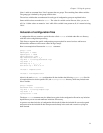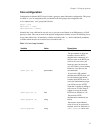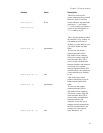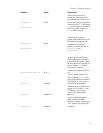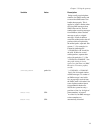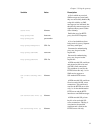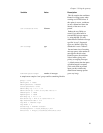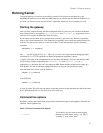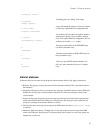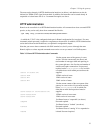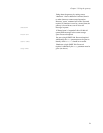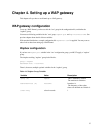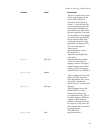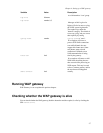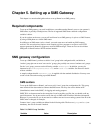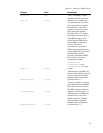Chapter 3. Using the gateway
--verbosity <level>
-D <places>
Set debug-places for ’debug’ level output.
--debug <places>
-F <file-name>
Log to file named file-name, too. Does not overrun
or affect any logfile defined in configuration file.
--logfile <file-name>
-V <level>
Set verbosity level for that extra logfile (default 0,
which means ’debug’). Does not affect verbosity
level of the logfile defined in configuration file, not
verbosity level of the stdout output.
--fileverbosity <level>
-S
Start the system initially at SUSPENDED state
(see below, bearerbox only)
--suspended
-I
Start the system initially at ISOLATED state (see
below, bearerbox only)
--isolated
-H
Only try to open HTTP sendsms interface; if it
fails, only warn about that, do not exit. (smsbox
only)
--tryhttp
Kannel statuses
In Kannel, there are four states for the program (which currently directly only apply to bearerbox):
a. Running. The gateway accepts, proceeds and relies messages normally. This is the default state for
the bearerbox.
b. Suspended. The gateway does not accept any new messages from SMS centers nor from UDP ports.
Neither does it accept new sms and wapbox connections nor sends any messages already in the
system onward.
c. Isolated. In this state, the gateway does not accept any messages from external message providers,
which means SMS Centers and UDP ports. It still processes any messages in the system and can
accept new messages from sendsms interface in smsbox.
d. Full. Gateway does not accept any messages from SMS centers, because maximum-queue-length
is achieved.
e. Shutdown. When the gateway is brought down, it does not accept any new messages from SMS
centers and UDP ports, but processes all systems already in the system. As soon as any queues are
emptied, the system exits
22



